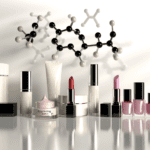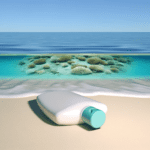Introduction to Butyl Benzyl Phthalate
What is Butyl Benzyl Phthalate?
Butyl Benzyl Phthalate (BBP) is a chemical compound belonging to the family of phthalates, which are esters of phthalic acid. It is primarily used as a plasticizer, which means it is incorporated into plastics to increase their flexibility, transparency, durability, and longevity. BBP is particularly known for its application in the fragrance industry, where it is used to stabilize scents and enhance the longevity of fragrances in various personal care products.
Common Uses in Fragrance Products
BBP is commonly found in a wide array of fragrance products, including but not limited to perfumes, colognes, body sprays, air fresheners, and scented candles. It is also present in other personal care items such as shampoos, conditioners, lotions, and cosmetics. The role of BBP in these products is often to ensure that the fragrance lingers for an extended period after application, providing a lasting sensory experience for the user.
Initial Concerns and Controversies
The initial concerns and controversies surrounding BBP stem from its classification as an endocrine disruptor. Research has indicated that BBP can interfere with the normal functioning of the hormonal system, leading to potential health risks. Despite its widespread use, BBP has been the subject of scrutiny due to its potential links to reproductive toxicity, developmental issues, and other health hazards. This has led to a growing demand for more stringent regulations and the development of safer alternatives in the fragrance and cosmetic industries.

Popular Read: Endocrine Disruptors in Skincare: What You Need to Know
Health Implications of Butyl Benzyl Phthalate
Endocrine Disruption and Hormonal Imbalance
Butyl Benzyl Phthalate (BBP), a common phthalate found in fragrances, is a known endocrine disruptor. It can interfere with the body’s hormonal systems, potentially leading to hormonal imbalances. These disruptions can affect various bodily functions, including growth, development, and reproduction. BBP and other phthalates mimic or block hormones, particularly estrogen and testosterone, which can lead to developmental, reproductive, and neurological issues.
Links to Breast Cancer
Research has indicated a potential link between phthalates like BBP and an increased risk of breast cancer. Phthalates may contribute to the development of breast cancer by altering the regulation of genes involved in cell growth and proliferation. While the exact mechanism is not fully understood, the association between phthalate exposure and breast cancer risk is a growing concern, warranting further investigation.
Impact on Menopause and Aging
Exposure to BBP may also have implications for menopause and aging. Studies suggest that phthalates can lead to earlier onset of menopause, which can have significant health implications for women, including increased risks for osteoporosis, cardiovascular disease, and other age-related conditions. Additionally, phthalates may accelerate cellular aging by affecting telomere length, a biomarker of biological aging.
Other Potential Health Risks
Beyond the direct hormonal effects, BBP exposure has been associated with a range of other health risks. These include respiratory issues, obesity, and type 2 diabetes. Children and pregnant women are particularly vulnerable to these effects, as phthalates can cross the placental barrier and may be present in breast milk. Furthermore, phthalates have been linked to neurodevelopmental issues in children, such as attention deficit hyperactivity disorder (ADHD) and lower IQ scores.
Environmental Concerns
Effects on Wildlife and Ecosystems
The widespread use of butyl benzyl phthalate (BBP) in various products has raised significant environmental concerns, particularly regarding its effects on wildlife and ecosystems. BBP is known to be a persistent organic pollutant, which means it can remain in the environment for extended periods, potentially disrupting the delicate balance of ecosystems. Studies have shown that BBP can accumulate in the tissues of aquatic organisms, leading to endocrine disruption and reproductive abnormalities. This bioaccumulation can have a cascading effect, impacting not only individual species but also the broader ecological communities they inhabit.
Persistence and Bioaccumulation
BBP’s chemical structure allows it to resist immediate degradation in the environment, leading to its persistence. Over time, this can result in the bioaccumulation of BBP in the food chain, posing a risk to both wildlife and humans. The ability of BBP to bioaccumulate is particularly concerning because it means that even small, seemingly insignificant releases of this chemical can eventually lead to high concentrations in certain organisms, especially those at the top of the food chain.
Waste and Pollution from Production
The production of BBP and its incorporation into various products also contributes to environmental pollution. The manufacturing process can result in the release of BBP into the air, water, and soil, which can have direct toxic effects on local flora and fauna. Additionally, improper disposal of products containing BBP can lead to secondary contamination of the environment, as these products break down and release the chemical into surrounding ecosystems. The waste generated from BBP production and the subsequent pollution of natural resources represent a significant environmental challenge that requires immediate attention and action.
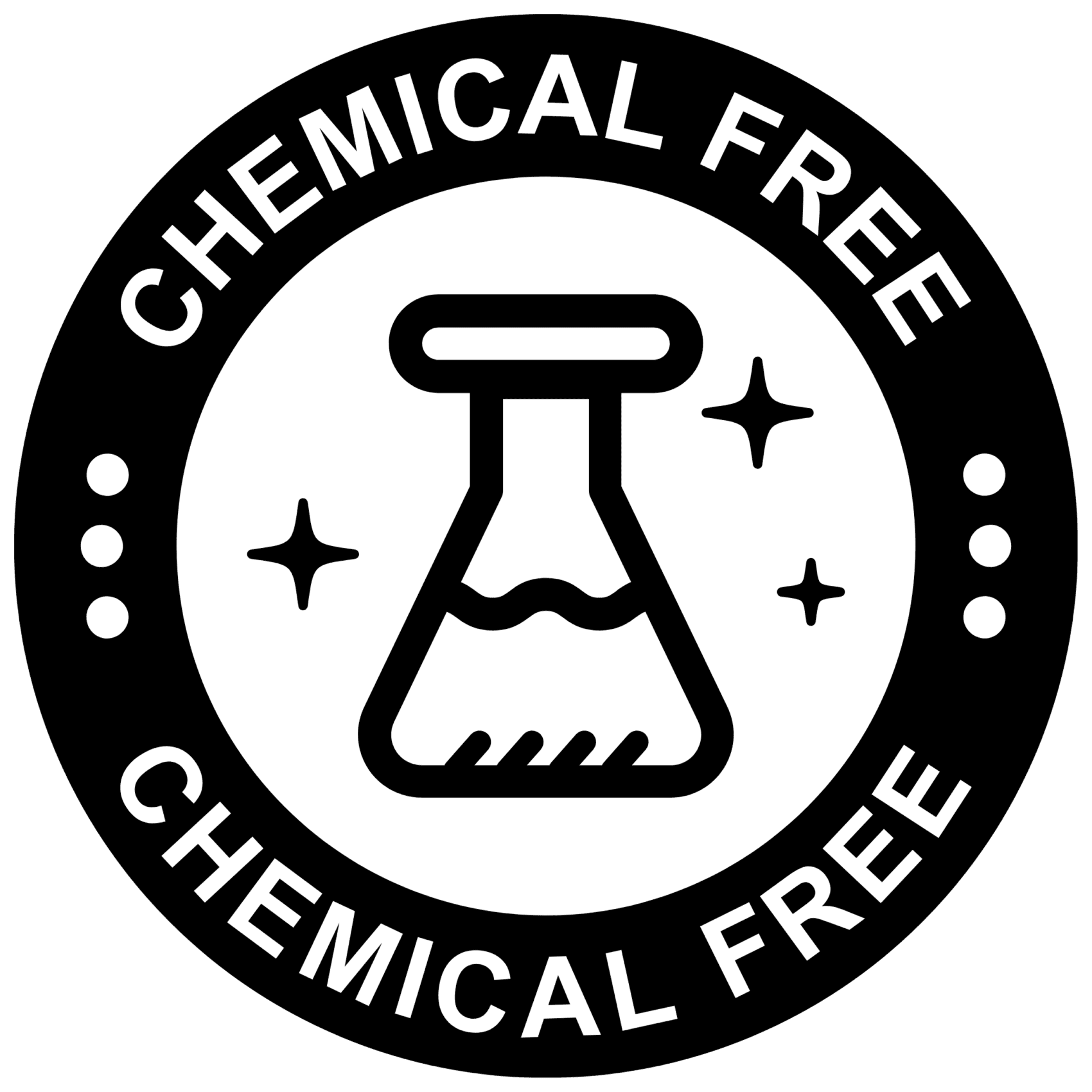
Doubting chemicals in skincare and femcare? Well done! Choose chemical-free products whenever possible.
Regulatory Status and Safety Standards
Current Regulations in North America
In North America, the regulatory landscape for chemicals such as Butyl Benzyl Phthalate (BBP) is complex and varies between countries and regions. In the United States, BBP is subject to regulation under the Toxic Substances Control Act (TSCA), which is administered by the Environmental Protection Agency (EPA). The EPA has the authority to require reporting, record-keeping, testing requirements, and restrictions relating to chemical substances. Specific to BBP, certain uses have been restricted in children’s toys and child care articles by the Consumer Product Safety Improvement Act (CPSIA).
In Canada, BBP is regulated under the Chemicals Management Plan (CMP), which assesses and manages chemicals that may pose a risk to the environment or human health. The Canadian Environmental Protection Act (CEPA) also lists BBP as a substance that may have an immediate or long-term harmful effect on the environment or its biological diversity.
International Safety Standards
Internationally, BBP is regulated under various safety standards and regulations. The European Union (EU) has a stringent regulatory framework for chemicals, including BBP, under the Registration, Evaluation, Authorisation and Restriction of Chemicals (REACH) regulation. REACH requires companies to provide safety information on substances and to register them with the European Chemicals Agency (ECHA). BBP is identified as a Substance of Very High Concern (SVHC) and is subject to authorization under REACH, which means that its use is permitted only under very specific conditions.
The Classification, Labelling and Packaging (CLP) Regulation, which aligns with the United Nations’ Globally Harmonized System (GHS), is another EU regulation that requires hazard classification and labelling for chemicals. BBP is classified and labelled according to its health and environmental hazards under this regulation.
Industry Self-Regulation and Transparency
Aside from government regulations, the chemical industry also engages in self-regulation to ensure the safety and transparency of its products. Industry groups often develop voluntary codes of conduct, best practice guidelines, and product stewardship programs to manage the use of substances like BBP. These initiatives aim to go beyond compliance with legal requirements and promote greater transparency and responsibility in the industry.
Transparency is further enhanced by initiatives such as Safety Data Sheets (SDS) and public disclosure of ingredients, which allow consumers and professionals to make informed decisions about the products they use. However, the effectiveness of self-regulation is sometimes questioned, and there is ongoing debate about the need for more stringent government regulations to protect public health and the environment.
Identifying and Avoiding Butyl Benzyl Phthalate
Reading Labels and Ingredient Lists
One of the most effective ways to avoid butyl benzyl phthalate (BBP) is to become vigilant about reading labels and ingredient lists on products. BBP can be found in a variety of personal care products, often listed under names such as butyl benzyl phthalate, benzyl butyl phthalate, or by its CAS number 85-68-7. However, it’s important to note that phthalates can also be hidden under the term “fragrance” or “parfum,” as they are often used to help scents linger. To minimize exposure, consumers should look for products labeled as “phthalate-free” and be wary of those that list “fragrance” without further details. Additionally, avoiding plastics with recycling codes #3, #6, or #7 can reduce BBP exposure, as these may contain phthalates.
Natural and Organic Alternatives
Switching to all-natural skin care products is another strategy to avoid BBP. These products are made without synthetic additives, including phthalates. When selecting all-natural alternatives, it’s essential to choose products that are water-free and have some backings like patents, research and no water listed on the product ingredient list – sometimes water is listed as eau, h2o, aqua or even “juice”.
Tips for a Chemical-Free Lifestyle
Adopting a chemical-free lifestyle extends beyond personal care products. Here are some tips to further reduce exposure to BBP and other harmful chemicals:
- Opt for glass or stainless steel containers instead of plastic for food storage and beverages.
- Choose toys made from natural materials like wood or organic cotton, especially for children who are more susceptible to phthalate exposure.
- Use natural cleaning products or make your own with ingredients like vinegar, baking soda, and essential oils.
- When remodeling, select phthalate-free options for flooring, wall coverings, and furniture.
- Prepare and consume fresh, whole foods rather than processed or packaged options, which can contain phthalates.
- Switch to water-free skincare
By incorporating these practices into daily life, individuals can significantly reduce their exposure to BBP and contribute to a healthier environment.
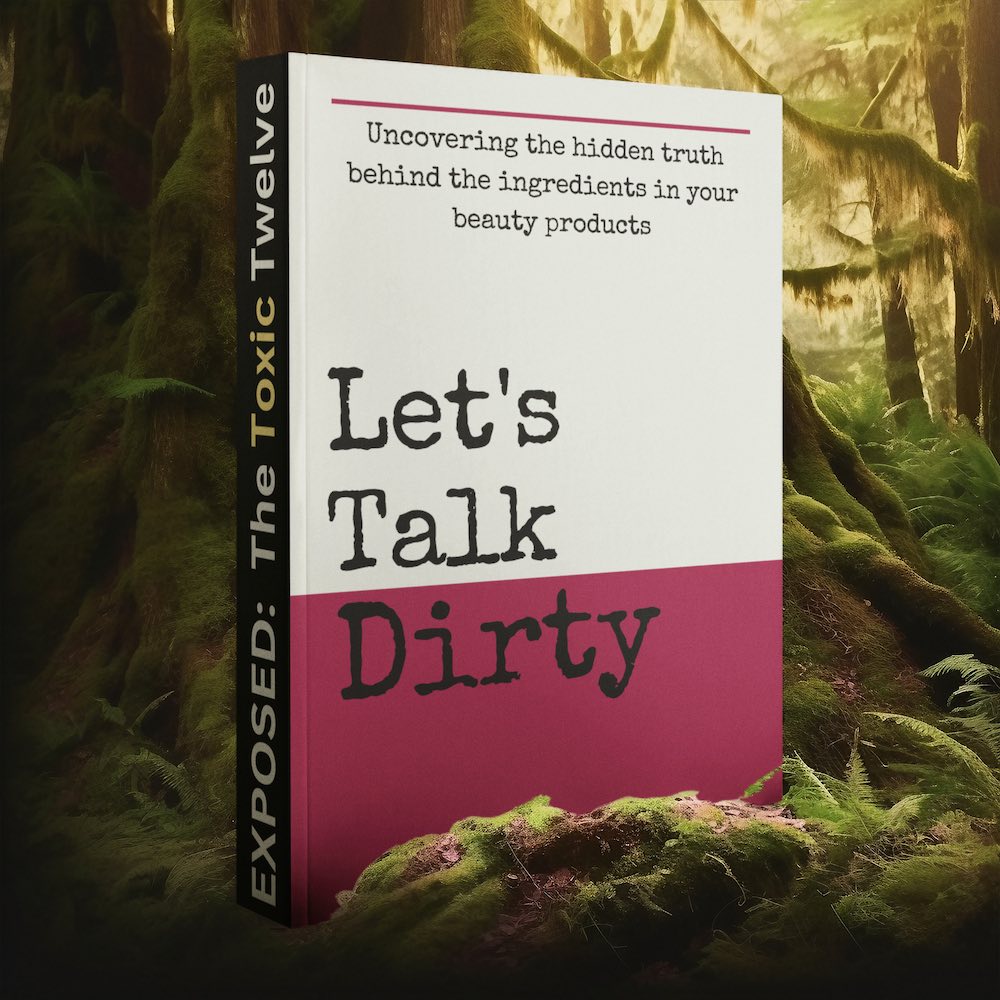
Feeling You Have a Right to Safe Beauty & Fem Care?
If so, it may be time for a change. It starts with knowledge. We have a few suggestions in our new guides.
Detoxification and Managing Exposure
Detox Methods and Practices
Reducing exposure to harmful chemicals like Butyl Benzyl Phthalate (BBP) is crucial, but equally important is supporting the body’s natural detoxification processes. Eating adequate fiber is essential for maintaining a healthy gut, which plays a significant role in eliminating toxins. Adults should aim for at least 30g of fiber daily from sources such as beans, vegetables, fruits, and seeds. Additionally, reducing ultra-processed foods can decrease the intake of food chemicals and additives, lessening the toxic burden on the body.
Supporting liver function is also vital, as it is the primary organ responsible for detoxification. Incorporating detox-promoting herbs like Milk Thistle and Turmeric, along with antioxidants such as Alpha Lipoic Acid and N-Acetyl Cysteine, can aid in detoxifying harmful chemicals, reducing inflammation, and combating oxidative stress. Ensuring a healthy gut is also critical, as it affects the body’s ability to detoxify and eliminate chemicals efficiently.
Balancing Hormones Naturally
Exposure to endocrine-disrupting chemicals (EDCs) like BBP can lead to hormonal imbalances. To counteract this, focus on a diet rich in phytoestrogens, which are found in foods like flaxseeds, soy, and certain vegetables, as they can help balance estrogen levels. Consuming foods high in omega-3 fatty acids, such as walnuts and fatty fish, can also support hormonal health.
Regular exercise is another effective way to naturally balance hormones. Physical activity can help reduce stress levels and regulate hormones like insulin and cortisol. Additionally, ensuring adequate sleep and managing stress through practices such as yoga, meditation, or deep breathing exercises can have a positive impact on hormonal balance.
Improving Energy and Well-being
Minimizing exposure to harmful chemicals and supporting the body’s detoxification pathways can lead to improved energy levels and overall well-being. Hydration is key; drinking plenty of water helps flush toxins from the body and supports kidney function. Incorporating a variety of antioxidant-rich foods, such as berries, nuts, and green leafy vegetables, can protect the body from oxidative stress and boost energy levels.
Regular physical activity not only aids in hormonal balance but also increases energy by improving cardiovascular health and muscle strength. Additionally, establishing a consistent sleep routine can enhance energy levels and cognitive function. Lastly, reducing exposure to environmental toxins by choosing non-toxic household and personal care products can further contribute to a sense of well-being and vitality.
Do you know the 3 main ways how your body is exposed to harmful chemicals, which affect your hormones, your thyroid, health and beauty?
If not, it may be time to learn about them. It takes about 1-2 minutes.
We have a few suggestions how to avoid these silent health and immune system killers in our new guide.
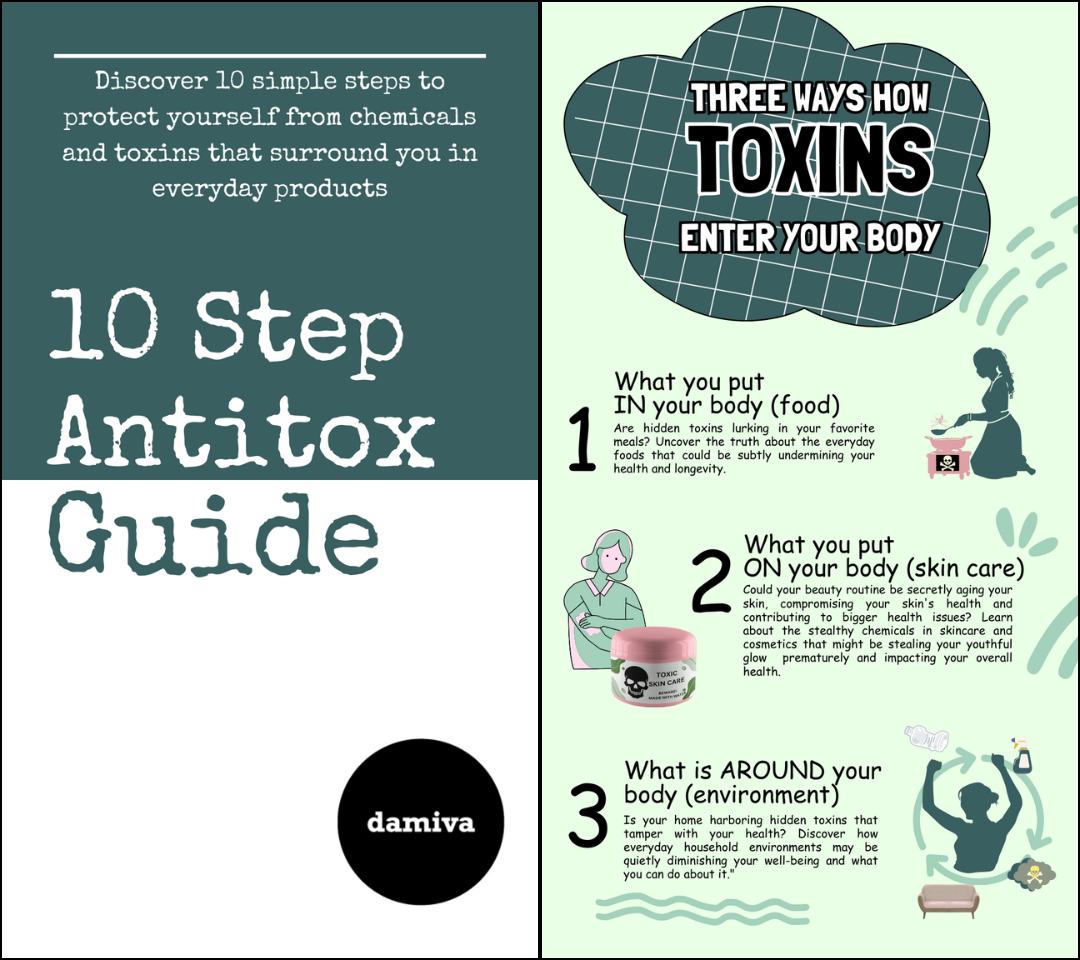
Conclusion: Empowering Choices for Health and Beauty
The Importance of Informed Decisions
Making informed decisions about the products we use is crucial for our health and the environment. Butyl Benzyl Phthalate (BBP), a common fragrance additive, has been linked to various health concerns, including endocrine disruption and potential links to cancer. By educating ourselves about the ingredients in our beauty and personal care products, we can make choices that align with our health values and reduce our exposure to potentially harmful chemicals.
Advocating for Safer Products
As consumers, we have the power to drive change in the beauty industry by advocating for safer products. This involves supporting companies that prioritize transparency and the use of non-toxic ingredients. We can also encourage regulatory bodies to implement stricter safety standards and to require full disclosure of all fragrance components. By voicing our concerns and preferences, we contribute to the development of healthier products and practices.
Personal and Community Health Advocacy
Personal health advocacy begins with choosing products free from BBP and other harmful additives. Sharing information with friends, family, and online communities can amplify our impact, helping others to make safer choices. Additionally, participating in community initiatives that promote a chemical-free lifestyle can lead to broader societal change. By working together, we can create a demand for products that are not only effective but also safe for our bodies and the planet.
In conclusion, the journey towards a healthier lifestyle and a cleaner environment is a collective effort. It starts with individual choices and extends to advocating for industry-wide changes. By making informed decisions, supporting safer products, and engaging in community health advocacy, we empower ourselves and others to live in harmony with our bodies and nature. Let’s embrace this empowerment for a brighter, healthier future.




